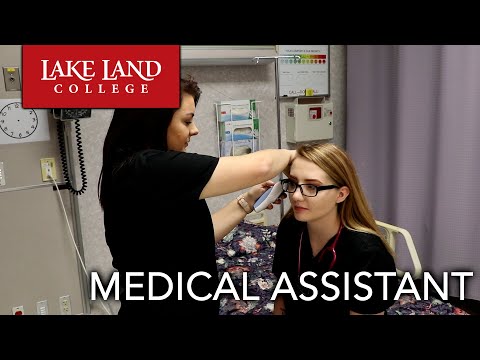Who Gets Paid More: Phlebotomists or Medical Assistants?
Contents
- Phlebotomists vs. Medical Assistants Who Earns More?
- The Differences in Phlebotomist and medical assistant Roles
- The Various Duties of a Phlebotomist
- The Various Duties of a Medical Assistant
- The Training and Education Required for a Phlebotomist
- The Training and Education Required for a Medical Assistant
- The Certification Required for a Phlebotomist
- The Certification Required for a Medical Assistant
- The Job Outlook for Phlebotomists
- The Job Outlook for Medical Assistants
We all know that medical professionals are some of the highest-paid workers out there. But what about the people who support them? In this post, we compare the earnings of two key members of the medical team: phlebotomists and Medical assistants
Checkout this video:
Phlebotomists vs. Medical Assistants Who Earns More?
The Bureau of Labor Statistics (BLS) reports that the median annual salary for phlebotomists was $32,710 in May 2016, while medical assistants earned a median annual salary of $30,590 during the same time period. However, keep in mind that salaries can vary greatly depending on factors such as your specific job duties, level of experience, and geographic location. With that said, let’s take a more detailed look at the earnings of these two medical support professions.
As mentioned above, phlebotomists earned a median annual salary of $32,710 in 2016. Salaries for the bottom 10 percent of earners fell below $23,430, while the top 10 percent of earners brought home more than $48,700.
Medical assistants earned a median annual salary of $30,590 in 2016. Salaries for the bottom 10 percent guests dipped below $22,280 annually, while those in the top 10 percent bracket pulled in more than $44,870 per year.
The Differences in Phlebotomist and medical assistant Roles
Phlebotomists and medical assistants are both important members of the healthcare team. They both provide valuable services to patients, but there are some key differences in their roles.
Phlebotomists are primarily responsible for drawing blood from patients. They may also perform other related tasks, such as preparing blood specimens for lab testing and maintaining phlebotomy equipment. Medical assistants, on the other hand, have a more general scope of practice. They may perform some or all of the following tasks: taking patient medical histories, measuring vital signs, administering medications, scheduling appointments and providing administrative support to the medical staff.
In terms of pay, medical assistants generally earn more than phlebotomists. According to the Bureau of Labor Statistics (BLS), the median annual salary for medical assistants was $33,610 in May 2018, while the median annual salary for phlebotomists was $32,710.
The Various Duties of a Phlebotomist
A phlebotomist is a healthcare professional who is trained to draw blood from patients for medical testing, transfusions, or donations. Phlebotomists are often employed by hospitals, medical laboratories, blood banks, and doctor’s offices. In some cases, phlebotomists may also be responsible for other tasks such as scheduling appointments, updating patient records, and answering phones.
The duties of a medical assistant are much more varied than those of a phlebotomist. Medical assistants typically work in doctor’s offices and perform a variety of administrative and clinical tasks. These tasks may include everything from scheduling appointments to taking X-rays to assisting with minor surgical procedures. In some cases, medical assistants may also be responsible for billing and coding insurance forms.
The Various Duties of a Medical Assistant
Medical assistants typically have more responsibilities than phlebotomists. Medical assistants generally perform both clinical and administrative duties, while phlebotomists only perform clinical duties.
Medical assistants generally perform both clinical and administrative duties. Administrative duties may include scheduling appointments, maintaining medical records billing and coding information for insurance purposes, and handling correspondence. Clinical duties may include taking medical histories and recording vital signs, preparing patients for examination, assisting the physician during the examination, and performing basic laboratory tests.
Phlebotomists only perform clinical duties. Phlebotomists collect blood samples from patients for testing purposes. They prepare the equipment needed for blood collection and explain the procedure to patients before collecting the blood sample.
The Training and Education Required for a Phlebotomist
A phlebotomist is a person who draws blood from patients for medical purposes. They may work in a hospital, physician’s office, or blood donation center. To become a phlebotomist, one must have a high school diploma or equivalent and complete an accredited training program. Some states require certification, but it is not always necessary.
Becoming a medical assistant is another option for those interested in working in the medical field. Medical assistants perform administrative and clinical tasks in physicians’ offices, hospitals, and other healthcare facilities. Most medical assistants have at least a high school diploma, although some states require certification.
So, which career pays more? According to the Bureau of Labor Statistics, the median annual wage for phlebotomists was $32,710 in May 2016. The median annual wage for medical assistants was $31,540 in May 2016. So, both careers offer similar pay.
The Training and Education Required for a Medical Assistant
Becoming a medical assistant does require some formal training and education, though the level of education and training required may vary from state to state and from employer to employer. Typically, a high school diploma or equivalent is required, along with the completion of a postsecondary medical assisting program that has been accredited by the Commission on Accreditation of Allied Health Education Programs (CAAHEP). Once you have completed your training, you will need to pass a national certification exam in order to become a certified medical assistant (CMA). Some states also require medical assistants to become licensed.
The Certification Required for a Phlebotomist
The certification required for a phlebotomist is very important. They must have a high school diploma or equivalent and must complete an accredited phlebotomy training program. After completing the training program, they must then pass a national certification exam. Some states require that phlebotomists also be licensed, but this is not always the case.
Medical assistants, on the other hand, do not need to be certified in order to work. Most medical assistants have at least a high school diploma, although some may have completed a postsecondary medical assistant program. While certification is not required, many medical assistants choose to become certified through professional organizations such as the American Association of Medical Assistants or the National Healthcare Association. Certification can show employers that a medical assistant has the knowledge and skills necessary to perform their job well.
The Certification Required for a Medical Assistant
The certification required for a Medical Assistant depends on the state in which you plan to work. In some states, a Medical Assistant may perform basic laboratory tests, administer injections, and even help with minor surgery under the supervision of a licensed physician. Most states, however, have separate certification requirements for phlebotomists and medical assistants.
Phlebotomists are usually required to have completed an accredited phlebotomy training program and to have passed a national or state-administered certification exam. Medical assistants, on the other hand, typically only need to have completed a formal medical assisting program and to have passed an exam administered by their employer.
In terms of salary, both phlebotomists and medical assistants earn relatively similar wages. According to the Bureau of Labor Statistics, the median annual salary for phlebotomists was $32,710 in May 2016, while the median annual salary for medical assistants was $30,590.
The Job Outlook for Phlebotomists
In 2018, the Bureau of Labor Statistics (BLS) determined that there were about 122,700 phlebotomists in the United States They project that this number will grow by about 25% from 2018 to 2028, which is much faster than the average for all occupations. This growth is due to an aging population and the increasing numbers of diagnostic tests and treatments that require blood samples.
The BLS also reports that the median annual salary for phlebotomists was $34,480 in 2018. The top 10% earn more than $51,050, while the bottom 10% earn less than $23,490.
Medical assistants are another important member of the healthcare team. They perform administrative and clinical tasks in healthcare facilities. According to the BLS, there were about 708,000 medical assistants in 2018. The projected growth for this occupation is 23% from 2018 to 2028, which is much faster than the average for all occupations.
The BLS also reports that the median annual salary for medical assistants was $33,610 in 2018. The top 10% earn more than $48,720, while the bottom 10% earn less than $24,560.
The Job Outlook for Medical Assistants
Recent growth in the medical assistant profession is largely due to the Affordable Care Act which has increased people’s access to healthcare and preventive services. The Bureau of Labor Statistics projects that employment of medical assistants will grow much faster than the average for all occupations from 2016 to 2026.
Medical assistants held about 646,100 jobs in 2016. Most worked in physicians’ offices, but they also worked in hospitals, clinics, outpatient care centers, and other healthcare facilities. A small number worked in laboratories or attended classes at night.
As the healthcare industry grows, so does the demand for medical assistants!






